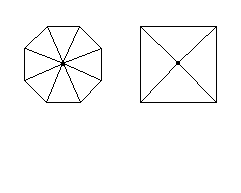Suggestions
Use up and down arrows to review and enter to select.Please wait while we process your payment
If you don't see it, please check your spam folder. Sometimes it can end up there.
If you don't see it, please check your spam folder. Sometimes it can end up there.
Please wait while we process your payment

By signing up you agree to our terms and privacy policy.
Don’t have an account? Subscribe now
Create Your Account
Sign up for your FREE 7-day trial
Already have an account? Log in
Your Email
Choose Your Plan
Individual
Group Discount
Save over 50% with a SparkNotes PLUS Annual Plan!
 payment page
payment page
Purchasing SparkNotes PLUS for a group?
Get Annual Plans at a discount when you buy 2 or more!
Price
$24.99 $18.74 /subscription + tax
Subtotal $37.48 + tax
Save 25% on 2-49 accounts
Save 30% on 50-99 accounts
Want 100 or more? Contact us for a customized plan.
 payment page
payment page
Your Plan
Payment Details
Payment Summary
SparkNotes Plus
You'll be billed after your free trial ends.
7-Day Free Trial
Not Applicable
Renews November 28, 2024 November 21, 2024
Discounts (applied to next billing)
DUE NOW
US $0.00
SNPLUSROCKS20 | 20% Discount
This is not a valid promo code.
Discount Code (one code per order)
SparkNotes PLUS Annual Plan - Group Discount
Qty: 00
SparkNotes Plus subscription is $4.99/month or $24.99/year as selected above. The free trial period is the first 7 days of your subscription. TO CANCEL YOUR SUBSCRIPTION AND AVOID BEING CHARGED, YOU MUST CANCEL BEFORE THE END OF THE FREE TRIAL PERIOD. You may cancel your subscription on your Subscription and Billing page or contact Customer Support at custserv@bn.com. Your subscription will continue automatically once the free trial period is over. Free trial is available to new customers only.
Choose Your Plan
For the next 7 days, you'll have access to awesome PLUS stuff like AP English test prep, No Fear Shakespeare translations and audio, a note-taking tool, personalized dashboard, & much more!
You’ve successfully purchased a group discount. Your group members can use the joining link below to redeem their group membership. You'll also receive an email with the link.
Members will be prompted to log in or create an account to redeem their group membership.
Thanks for creating a SparkNotes account! Continue to start your free trial.
We're sorry, we could not create your account. SparkNotes PLUS is not available in your country. See what countries we’re in.
There was an error creating your account. Please check your payment details and try again.
Please wait while we process your payment

Your PLUS subscription has expired
Please wait while we process your payment
Please wait while we process your payment

Area of Regular Polygons
A regular polygon, remember, is a polygon whose sides and interior angles are all congruent. To understand the formula for the area of such a polygon, some new vocabulary is necessary.
The center of a regular polygon is the point from which all the vertices are equidistant. The radius of a regular polygon is a segment with one endpoint at the center and the other endpoint at one of the vertices. Thus, there are n radii in an n-sided regular polygon. The center and radius of a regular polygon are the same as the center and radius of a circle circumscribed about that regular polygon.
An apothem of a regular polygon is a segment with one endpoint at the center and the other endpoint at the midpoint of one of the sides. The apothem of a regular polygon is the perpendicular bisector of whichever side on which it has its endpoint. A central angle of a regular polygon is an angle whose vertex is the center and whose rays, or sides, contain the endpoints of a side of the regular polygon. Thus, an n-sided regular polygon has n apothems and n central angles, each of whose measure is 360/n degrees. Every apothem is the angle bisector of the central angle that contains the side to which the apothem extends. Below are pictured these characteristics of a regular polygon.

Once you have mastered these new definitions, the formula for the area of a regular polygon is an easy one. The area of a regular polygon is one-half the product of its apothem and its perimeter. Often the formula is written like this: Area=1/2(ap), where a denotes the length of an apothem, and p denotes the perimeter.
When an n-sided polygon is split up into n triangles, its area is equal to the sum of the areas of the triangles. Can you see how 1/2(ap) is equal to the sum of the areas of the triangles that make up a regular polygon? The apothem is equal to the altitude, and the perimeter is equal to the sum of the bases. So 1/2(ap) is only a slightly simpler way to express the sum of the areas of the n triangles that make up an n-sided regular polygon.

Please wait while we process your payment

